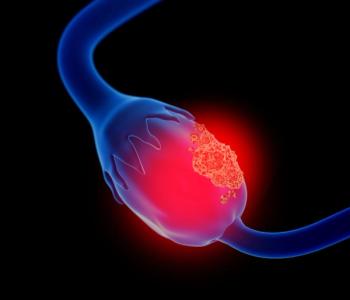![According to John Henson, MD, “What we need are better treatments to control the [brain] tumor once it’s detected.”](https://cdn.sanity.io/images/0vv8moc6/cancernetwork/e0d29c38bb732429ae370e4ef7d1829a10c96446-2992x1684.png?w=350&fit=crop&auto=format)
What’s New in Brain and Hereditary Cancers? Henson on Updates, Areas of Improvement
According to John Henson, MD, patients with ovarian, breast, endometrial, and colon cancers benefit the most from proactive hereditary analyses.
During a visit to the Georgia Cancer Center in Augusta, GA, CancerNetwork® spoke with John Henson, MD, the director of the Hereditary Brain Tumor Clinic and the Brain Tumor Program at Georgia Cancer Center. The interview focused on brain cancers and hereditary cancers.
The discussion ranged from topics like intriguing new drugs, such as the newly approved dual IDH1 and IDH2 inhibitor vorasidenib (Voranigo) for grade 2 astrocytoma or oligodendroglioma, to areas that institutions should focus on to improve prognosis regarding brain and hereditary cancers. According to Henson, improving prognoses for brain cancer ultimately comes down to developing better treatments, as brain cancers are too rare to screen for. Conversely, for hereditary cancers, more patients need to be screened whenever mutations, such as BRCA2, are identified, so that diseases can be caught in earlier stages, when they are more treatable.
What novel research or developments in the neuro-oncology field hold promise to improve outcomes among different brain cancer populations?
We’re facing some very interesting situations in terms of new therapies. We have an emerging ability to alter the genes that are inside the tumor cells, typically using a viral delivery mechanism. There are novel drug therapies that are coming out that are going to hold a lot of promise.
Some of them haven’t delivered that promise yet. For example, with immunotherapy, which has been so important in many other cancers, we’ve not found the way to employ that in the most useful manner for patients with malignant gliomas. That’s an example where there’s this whole burgeoning field in oncology that’s been so helpful to many different types of tumors, that we have not been able to take advantage of. Then we have interesting drugs that are being developed right now for altering the metabolic processes that are inside the tumor cells. I’m thinking specifically of the recently approved IDH1 and IDH2 inhibitors; we now have a pill where we can block gliomas that are formed based on IDH mutations.1 These are examples of things that are pouring out of the pipeline. We’re very excited about that.
Why has immunotherapy been harder to develop for brain cancers vs other disease states?
We’re not entirely sure why that is, but there are several theories. One is that, although you can ramp the immune system up with immunotherapy to try to attack the tumor, the nervous system is a special space in terms of the ability of the immune system to get there. In addition, we have typically employed those treatments at a time after the patient has gotten their surgery and their initial radiation chemotherapy treatment, and there’s reason to suspect that those treatments, in and of themselves, may create a very difficult environment for the immune system in which the immune system could try to attack the tumors. That somehow the treatment itself is making it more difficult for the immune system to attack. One of the things that is currently a fairly large topic in the immunotherapy of malignant gliomas is trying to move that treatment very far up in the beginning of therapy. Not waiting until after the patient finishes their radiation chemotherapy for the first 6 months of treatment but moving it up to the very beginning.
What are some of the most diagnosed types of hereditary cancer? How can clinicians best screen for hereditary risk factors related to these cancers, and how can these diseases be managed most effectively?
Far and away, the biggest groups of individuals who benefit from hereditary analysis are those with ovarian, breast, endometrial, and colon cancers. Those are the big ones by far. It’s fascinating because…after that, there’s this very large group of less common tumors. It’s interesting that some of the less common ones are more likely to be due to a single gene defect that the patient has inherited, or perhaps come up with by accident, on their own—the so-called de novo mutation. Those are the large categories, and one that I’d be remiss not to add to that is pancreatic. Pancreatic cancers are among the most likely to have a hereditary influence that we can detect with genetic testing.
What ongoing research aims to further improve detection and/or intervention strategies for patients with hereditary cancers?
One of the largest issues around this subject is getting patients to know genetic testing is valuable. We also have a little bit more work to do with getting the practitioners to understand that as well, although we’ve made enormous strides in the last 10 to 15 years. An example of that is that [for] any individuals who have had a relative, for example, who has had pancreatic cancer and died from it, which is unfortunately very common with pancreatic cancer, all first-degree relatives need to undergo hereditary genetic testing with typically a blood or saliva test to look for the genes that can help us understand the risk of additional family members [being diagnosed] with pancreatic cancer. That’s not widely known, and we spend a lot of time trying to educate on a public level…about pancreatic cancer. The same thing applies to ovarian cancer. All family members of a woman who develops ovarian cancer, if the woman herself is not tested, all first-degree relatives need to be tested. Endometrial cancer is the same thing. Then, for example, with breast cancer, if a patient has a triple-negative/HER2-negative onset at age 50 or younger, the patient needs to be tested. If that doesn’t occur, then the first-degree relatives need to be tested. These are concepts for which we haven’t been successful enough at moving the information into the public domain; we’re doing much better with the doctors.
Looking towards the future, what areas must institutions focus on to improve the prognosis of patients with brain tumors or hereditary cancers?
Those are 2 related but somewhat different areas. Improving the prognosis for brain tumors comes down to improving treatments. We don’t anticipate that there’ll ever be a time when we’ll screen for primary brain tumors. It’s too rare. I don’t think that will happen. Basically, what we need are better treatments to control the tumor once it’s detected.
In the hereditary sphere, it’s the other way around, where if we know, for example, that a family has a mutation in a gene called BRCA2, everybody in the family who has that mutation needs screening for pancreatic cancer. We can go out and get all those people screened and detect if they develop a pancreatic cancer when it’s very early—stage I or stage II—and prevent people from coming in with terrible symptoms and stage IV pancreatic cancer, where the options are very limited. If we can move into that earlier detection and early treatment mode, that will have a profound impact on the survivability of these tumors.
References
- FDA approves vorasidenib for Grade 2 astrocytoma or oligodendroglioma with a susceptible IDH1 or IDH2 mutation. News release. FDA. August 6, 2024. Accessed November 20, 2025. https://tinyurl.com/yc55dwex
Newsletter
Stay up to date on recent advances in the multidisciplinary approach to cancer.





















































































